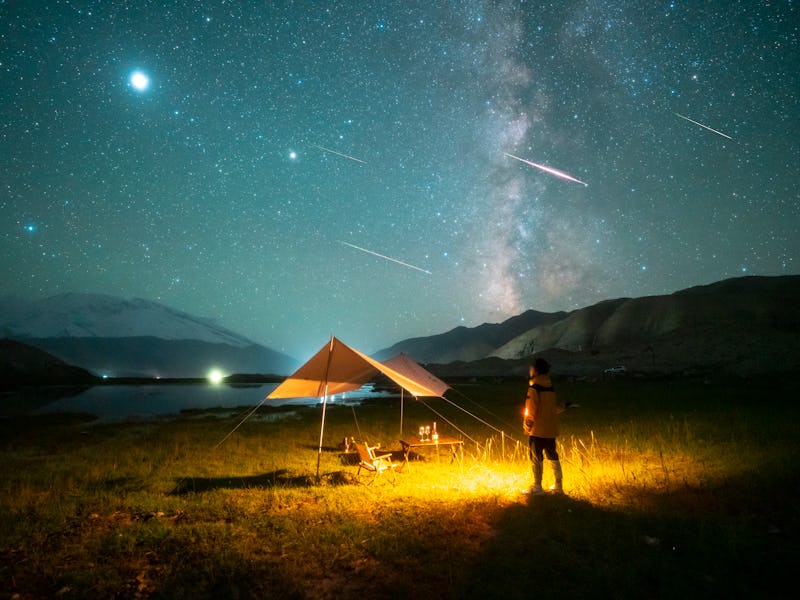You Need to See This Year’s Most Awesome Meteor Shower
The Perseids are visible now, and they’ll peak on the night of Aug. 12.

If you’ve ever wanted to wish on a shooting star, your chance is coming up. The Perseids, one of the year’s most spectacular meteor showers, will reach its peak late on the night of Aug. 12 and into the early morning hours of Aug. 13. From the right vantage point, you might be able to see a meteor flash across the sky about once every minute.
Where, When, and How to See the Perseids
A man watches the Perseid meteor shower on the Pamir Plateau on August 13, 2021 in Xinjiang Uygur Autonomous Region of China.
Once a year, from mid-July to late August, Earth’s orbit passes through the trail of dust left in the wake of Comet 109/P Swift-Tuttle. Those tiny dust particles patter against Earth’s atmosphere like bugs hitting a windshield — if you can picture the bugs moving at more than 13,000 miles an hour and disintegrating in tiny puffs of fire. The brief, bright flash of a “shooting star” is actually the glow of air more than 50,000 miles above you, superheated by friction with an incoming bit of space dust.
The Perseids are visible any night between July 17 and Aug. 24, but our planet will pass through the densest part of the comet’s debris trail on the night of Aug. 12 and the early morning of Aug. 13. That means more meteors per hour and a better chance of seeing the Perseids in action. Start after midnight and stay out until the hours just before dawn.
If you’re out earlier in the night, you’ll see fewer meteors, but they’ll leave longer, brighter trails across the night sky. These “Earthgrazers” are bits of dust just skimming across the top of Earth’s atmosphere, like stones skipping across a pond, leaving fiery trails behind them. As Earth rotates over the course of the night, you’ll see fewer Earthgrazers, but more meteors overall.
To see the Perseids, look toward the constellation Perseus in the northeastern sky. The meteors aren’t actually coming from the stars that make up Perseus, which are dozens to hundreds of light years away, but a quirk of perspective makes them seem to radiate from somewhere in the constellation — hence the name Perseids. As Swinburne University explains, “This trick of perspective is more familiar to us if we stand in the middle of a train track or a road that stretches off into the distance. In this case, the parallel rails or edges of the road are seen to converge in a single point — the vanishing point.”
With only a waning crescent Moon to light the sky, this year’s Perseids should be easy to see from any dark spot. Don’t forget to make a wish!